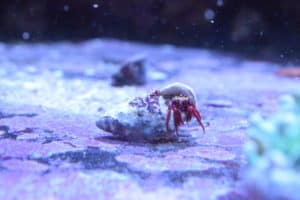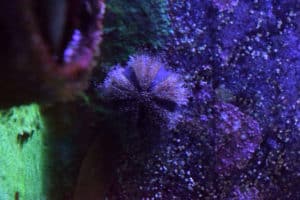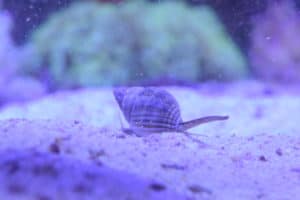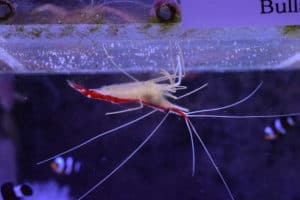The Essential Top 10 Reef Cleaners
by Glenn Laborda
The modern reef tank has evolved. In the past, a perspective reef keeper would have to go to a local fish store or stores to learn and purchase supplies for their reef. Today, there is literally huge shows and expos dedicated to this part of the hobby. At these events you can find some of the rarest items possible for your reef. You can purchase rare mushrooms in upwards of 10,000 dollars and a quarter inch of an S.P.S. frag in the thousands!
The people who sell the items are generally not from a L.F.S.; they are coral traders. Great at buying and selling odd and unique corals, but not well versed in the ecosystem of an established reef. Most of us do not want a plastic tub with egg crate racks and small frags. We want a small, complete piece of the reef in our home. We want to make the most natural looking picture of this as we can. That takes a balance of macro- and micro-organisms to keep everything in check.
I have been building these ecosystems for over 30 years. I have tried many approaches from the early Jaubert systems to today’s full automated and ap-driven reefs. Over that expanse of time I have learned there are some amazing reef animals that excel at cleaning and husbandry of your reef.
Although there are probably over 100 reef animals that can make their way into the hobby, I will go over my top ten essential cleaners. These are all “generally” reef safe. Even safe cleaners can be opportunistic and eat a tank-make, but for the most part these are all good together.
Red Stripe Trochus: (Trochus radiatus) is a great algae eater. Will clean from the glass to the rocks. Very hardy, can flip itself over pretty easily. Keep about 1 per 2 gallons of tank volume.
Scarlet Hermit: (Paguriste cadenati) is a small Caribbean species which is great at eating filament type algae. They are omnivorous so supplement with pellets now and again. Same 1 per 2-3 gallons of tank volume.
Tuxedo Urchin: (Mespilia globulus) is one of my favorite reef cleaners. Will mow down algae not to bulldozing as they stay small. Can eat your coralline though. 1 per 30 gallons is sufficient.
Nassarius Snail: (Nassarius distortus) is the Tongan variety of sand snail. Omnivore/Detritivore, great at keeping sand stirred and oxygenated. Also great at finding uneaten food. 1 for every 2-3 gallons of tank volume.
Sand Star: (Astropectan polycanthus) is the white sand star. Another great sand mover, also omnivore/detritivore. Make sure all 5 arms are solid upon purchase. 1 for every 10-20 gallons of tank volume.
Conches: (Strombus sp.) are amazing at eating algae, stirring sand, and omnivorous cleanup. Some species get large, stick with fighting or tiger varieties. 1 per 10 gallons tank volume.
Cleaner Shrimp: (Lysmatta amboinensis) is fantastic at finding uneaten food, keeping parasites off fish and general tank cleaning. Become very “friendly” and will jump on your hand during routine maintenance. 1 per 10-15 gallons of tank volume.
Emerald Crab: (Mithraculus sculptus) is probably one of the best filament algae eaters in the invert world. This one though can be the most opportunistic “attacker” when large. Always buy the smallest ones. When algae is depleted, this becomes more relevant. 1 per 10 gallons of tank volume.
Banded Coral Shrimp: (Stenopus sp.) can be great for cleanup of unwanted pests and overfeeding. The large hispidus (regular B.C.) can get big. I tend to go for smaller gold sp. (cyanoscelis) or blue sp. (tenuirostris) especially in nano situations. 1 per tank!!
Tiger Pistol: (Alpheus bellulus) is an amazing sand mover. Unfortunately can end up behind rock. But they are still doing their job back there. They pair very well with yellow watchman goby (Cryptocentrus cinctus). 1 per 50 gallons of tank volume.
With this Top Ten List, you should have your algae and tank cleaning crew up to par. There is still a ton of odense on the reef keeper to help these guys out. Try to keep up with your husbandry and you will have an amazing piece of the ocean in your home.










